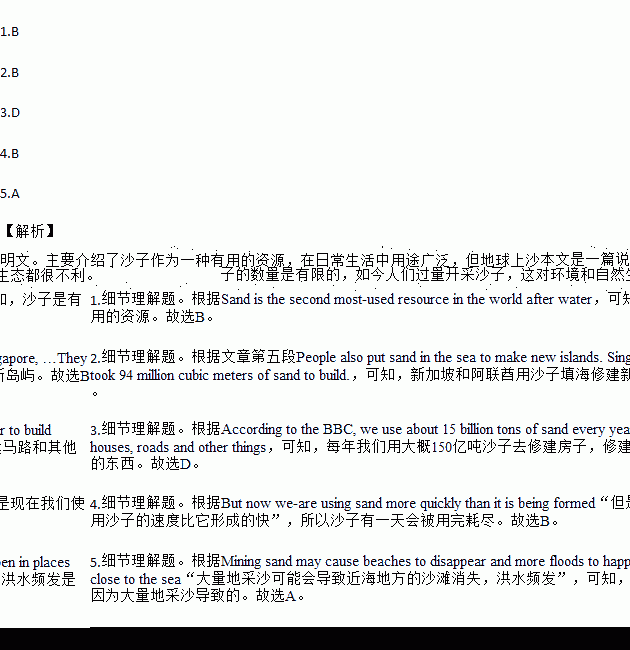题目内容
Sand is a common sight in the world. But you might not know that sand is also a useful resource (资源).
Sand is the second most-used resource in the world after water, the BBC reported. However, the UN said that sand is not limitless and that we might be running out of it.
Sand is made up of very small pieces of rock, soil and minerals (矿物质). It can take tens of thousands of years to form.
But now we are using sand more quickly than it is being formed. According to the BBC, we use about 15 billion tons of sand every year to build houses, roads and other things.
People also put sand in the sea to make new islands. Singapore, for example, is now 20 percent bigger than it was in 1965. Palm islands are three large man-made islands in Dubai, United Arab Emirates. They took 94 million cubic meters of sand to build.
If people keep using this much sand, it will run out in many places. For example, Vietnam may run out of construction (建造) sand by 2020, Live Science noted.
Since people need so much sand, they are trying to mine (开采) more of it. But this is bad for the environment. Mining sand may cause beaches to disappear and more floods to happen in places close to the sea. Also, this may affect the habitats (栖息地) of many plants and animals.
1.What does the story tell us about sand?
A.It can only be found on beaches. B.It is the most-used resource in the world.
C.It can never be used up. D.It can be used to build houses.
2.According to the passage, which country is using sand to build islands?
A.Singapore and Vietnam. B.Singapore and United Arab Emirates.
C.Britain and America. D.United Arab Emirates and Vietnam.
3.Every year, we use about________tons of sand.
A.94 million B.20 billion C.20 million D.15 billion
4.We are running out of sand because________.
A.there is only a little sand in the world B.we are using sand too quickly
C.we cannot mine enough sand D.our environment is badly polluted
5.In places close to the sea, more floods will happen because of________.
A.overmining of sand B.climate change
C.the increasing size of certain islands D.the death of some plants

